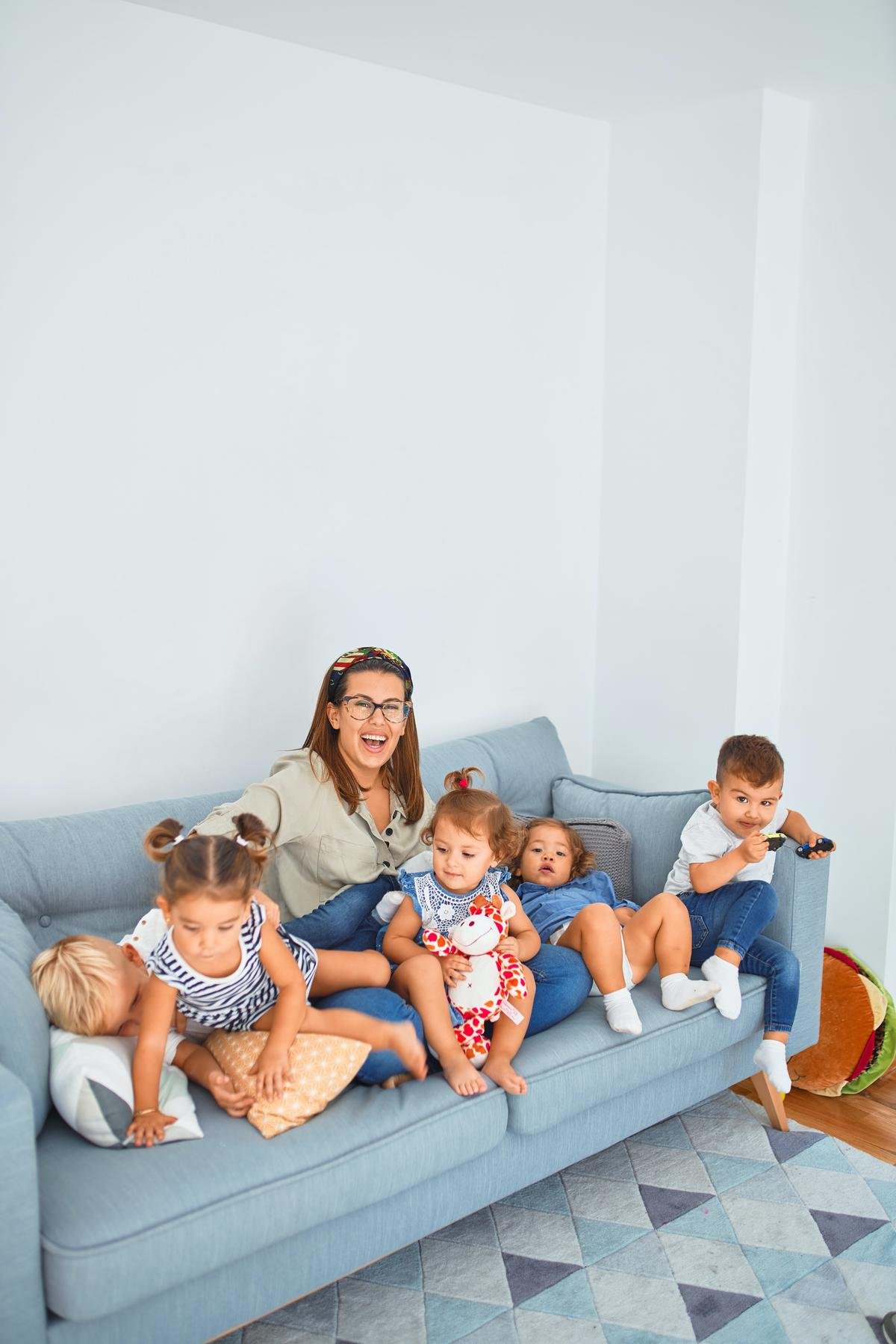
Ensuring the safety of an autistic child within the home environment is both a crucial concern and a loving responsibility for caregivers and family members. Nurturing a safe space goes beyond basic measures, adapting both the physical surroundings and communication strategies to the unique needs of an autistic individual. As we delve into the process of creating a supportive and protected environment, we shall discover how securing furniture, implementing safety gates, and removing potential dangers can profoundly impact a child’s well-being. Furthermore, the use of visual aids and the establishment of clear, consistent safety routines offer invaluable tools in fostering a secure setting where an autistic child can thrive with confidence and tranquility.
Creating a Safe Physical Environment
Creating a Safe Haven: Tailoring Your Home for an Autistic Child
Picture this: a haven where laughter dances through hallways, where the softest textures coax smiles, and where peace reigns, allowing uniqueness to flourish. This isn’t just a dream; it’s the home we can create for our autistic children—a place where they can feel secure, understood, and above all, loved.
Understanding an autistic child’s needs is like uncovering a treasure map to their comfort and safety. A house can transform into a nurturing environment with a few thoughtful adjustments. Let’s explore how to make this magic happen.
Start with Sensory Soothers
Sensory processing varies from one autistic child to another. Tune into their preferences. Soft lighting can replace harsh fluorescents to create a calm ambiance. Easy-to-navigate spaces with minimal clutter offer tranquility amidst a world that can sometimes feel chaotic.
Create Cozy Corners
Every child deserves a cozy corner, a little nook where the world quiets down. Fill these spaces with comfort items like plush pillows, weighted blankets, or a beloved collection of toys. Here, the vibes should whisper, “You’re safe.”
Color Their World with Care
Colors greatly affect mood and behavior. Cool tones liken to a gentle embrace for those who may feel overwhelmed by bright or bold hues. Think soft blues, gentle greens, and tranquil purples—in paint, in decor, in bedding.
Safe and Sound
Some children with autism are sensitive to sounds. White noise machines can mask jarring external noises, while soundproofing elements can dampen the din. Likewise, provide headphones specifically designed for noise reduction—little oases of quiet in a loud world.
Safeguard the Space
Safety is paramount. Secure furniture to walls, cover sharp corners, and place locks on windows and doors if necessary. Freedom is beautiful, but boundaries keep that freedom safe.
Embrace Routine
Predictability is a soothing balm. Clear labels and visual schedules help the day unfold with comfort and certainty. Use pictures for younger children or words for those who can read—either way, it’s about creating oases of predictability in the daily desert of surprises.
Let’s Play!
Incorporate areas for imaginative play that cater to your child’s interests and developmental level. It doesn’t take fancy toys—sometimes a cardboard box is a spaceship awaiting its captain.
Food for Thought
Kitchens can be a hotspot for family bonding or sensory overload. Opt for appliances with quieter cycles and create a small dining space free from overwhelming smells, where textures and flavors can be explored at a comfortable pace.
Patience is Key
Remember, some days will feel like a puzzle where the pieces don’t quite fit. But step by step, change by change, we create a living space where our children thrive.
Together, we’re more than parents and homemakers—we’re architects of nurturing. We’re crafting not just habitats for living but sanctuaries for growing. And isn’t that the most beautiful thing of all?

Communication and Visual Aids
Title: “Bright Signs Ahead: The Role of Visual Aids in Safeguarding Autistic Children”
Picture this: It’s afternoon in a bustling family home, and an air of calm understanding permeates the space. Here, visual aids aren’t just accessories—they’re essential tools that pave the way for safety and security for autistic children. These clever cues hold the power to not only inform but also to guide and protect. Let’s dive into how they do just that.
Navigating Daily Routines with Visual Schedules
Life can be a whirlwind, but a visual schedule stands as a lighthouse amidst the storm for an autistic child. It’s a simple yet transformative tool. Laying out the day’s activities with pictures or symbols not only fosters independence but also dispels anxiety. When children know what to expect, they’re less likely to feel overwhelmed, making each transition smoother and safer.
Visual Cues for Emergency Understanding
When emergencies strike, every second counts. Visual aids like emergency charts or flashcards can be life-savers, literally. They provide clear instructions on what to do and where to go during a crisis, such as a fire or medical emergency. This ensures that autistic children can find their way to safety even in the most stressful situations.
Interactive Labels for Household Safety
The home is a treasure chest of discoveries, but not all are meant for little hands. Using pictograms or labels with bold graphics to mark safe and off-limits areas or objects helps avert potential dangers. It’s like a visual vocabulary that speaks volumes, turning a curious exploration into a safe adventure.
Safety Symbols Around the Abode
It’s not just about cordoning off the ‘no-go zones’; employing universally recognized symbols like stop signs or caution tape across the home can alert an autistic child to areas that require extra caution. These symbols are like silent sentinels, offering guidance and preventing mishaps in and around the household.
The Power of ‘First-Then’ Boards
The ‘first-then’ strategy can be a boon in teaching autistic children safety practices. This visual method breaks down tasks into two steps: what needs to be done now (‘first’) and what comes after (‘then’). Using images or icons helps in understanding cause and effect, and encourages following through with safety rules before moving on to more desirable activities.
Using Social Stories to Illustrate Safety Scenarios
Sometimes, the best lessons are those that tell a story. Social stories can illustrate complex safety concepts in a relatable way. They can depict a character navigating situations like street-crossing or stranger-awareness, providing a blueprint for autistic children to emulate, ensuring a deeper understanding and adherence to safety behaviors.
Visual aids serve as silent guardians for autistic children, wrapping them in an extra layer of protection. They empower, they instruct, and most importantly, they create a bridge between understanding and action. Through symbols and images, they whisper life-saving tips into the ears of our most precious — our children. With these tools, families can breathe a little easier, knowing their home is not only a haven of love but of safety too.

Consistent Safety Routines and Drills
Navigating life with a child on the autism spectrum presents a beautiful tapestry of learning, adapting, and growing together. Delving deeper into the daily dance of family life, another key element in providing a safe, nurturing environment is establishing consistent safety routines. But why are such routines especially crucial for children with autism? Let’s uncover the reasons and how families can implement them effectively.
Children with autism often thrive on predictability. The world can be a whirlwind of sensory experiences—some delightful and others quite overwhelming. Consistent safety routines create a skeleton of predictability amidst the unpredictable nature of life. They serve as reliable points of reference that children can count on, day in and day out. This is not just comforting; it’s a fundamental part of helping them navigate their world.
For instance, integrating regular safety drills, like fire evacuation practices, into the routine can prepare children with autism for unexpected events without alarming them. These rehearsals can become a part of the rhythm of life, one that is recognized and understood, rather than feared. Role-playing different scenarios, such as what to do when approached by a stranger or how to cross the street safely, can further ingrain these protective habits.
Communication can sometimes be a hurdle in ensuring safety protocols are followed. This is where routine becomes the vehicle for understanding. Constantly reinforcing essential actions, such as locking doors or not touching hot surfaces, through repetitive, gentle reminders helps cement them in a child’s daily regimen. Reinforcement can be more effective when paired with clear, simple language or communication tools suited to the child’s specific needs and understanding level.
When it comes to emergencies, the power of rehearsal cannot be overstated. Role-playing emergency responses and using tools like scripted dialogues and pictograms can help children with autism process what’s needed when quick, decisive action is required. The goal here is not to instill fear but to empower and educate.
Another cornerstone is preventing accidents by minimizing risks. If every night before bed, a sweep is done to ensure no small objects, toxic substances, or sharp tools are within reach, this habit forms a safety net, catching potential hazards before they become problems.
Not to forget, independence is the end goal. When consistent safety routines are well established, children with autism can gradually take on more responsibility for their own well-being. It could begin with them ensuring their nightlight is turned on or their bedroom door is closed the way they like it, small steps that foster both their autonomy and their safety.
The simplicity of a routine, meticulously crafted and tenderly maintained, has the power to turn houses into safe havens. It’s not about sheltering children from the world; it’s about equipping them with the tools and the comfort they need to step boldly into it with confidence.
Understanding, consistency, communication, and empowerment are not mere buzzwords; they’re the groundwork of safety routines in homes where children with autism are cherished and nurtured. And within those walls, they don’t just survive; they flourish.

Photo by krakenimages on Unsplash
Embracing the responsibilities of creating a secure environment for an autistic child encompasses much more than physical adaptations—it’s about building a foundation of understanding and support that allows them to navigate their world safely. Through the strategic use of visual aids and the diligent practice of safety routines, caregivers can ensure that these important safety concepts become second nature to their child. The knowledge shared here provides a vital starting point for those seeking to shield these uniquely brilliant young minds from harm, while offering them the freedom to grow and explore within the loving confines of their homes.




